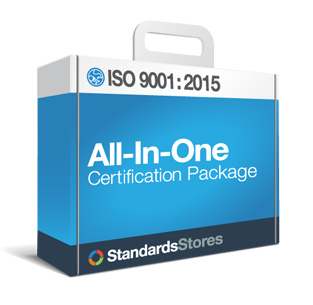Compare ISO 9001:1994 to ISO 9001:2000
The standards that made-up the ISO 9000 series were previously called:
- ISO 9001:1994 – Manufacturing with Design & Development
- ISO 9002:1994 – Production and Installation (No Design)
- ISO 9003:1994 – Final inspection and test
They were merged into a single standard, ISO 9001:2000 in the year 2000.
ISO 9001:2000 was replaced by ISO 9001:2008. ISO 9001:2008 was replaced by ISO 9001:2015 in September 2018. ISO 9001:2015 is the current version, and if you did not meet the transition deadline, your ISO 9001 certification is now void. If you would like to become ISO certified, check out our free Quick Start Kit.
Format Changed from 1994 to 2000
The text has been reworded for easier adaptation to a wider range of organizations. Some definitions have been changed.
- “Subcontractor” was changed to “supplier”.
- “Organization” now refers to the main organization seeking certification.
- “Customer” remains unchanged.
The standard has a process-oriented structure. It includes a process model based on the Plan-Do-Check-Act cycle, which outlines the product and/or service cycle and the management control cycle.
The 20-point format was replaced. The text of the standard is now organized into four major processes:
- Section 5. Management Responsibility
- Section 6. Resource Management
- Section 7. Product Realization
- Section 8. Measurement, Analysis, and Improvement
Documentation requirements are less-prescriptive, and allow greater flexibility.
New Requirements were added in 2000
Higher Focus on the Customer
Organizations must determine customer needs and expectations and, as a new requirement, monitor customer satisfaction and/or dissatisfaction.
Measurable Objectives Must be Established
Increased emphasis was placed on the role of top management to develop and improve the system, integrate legal and regulatory requirements, and establish measurable objectives at appropriate levels of the organization.
Measurement and Continual Improvement Required, not Implied
Measurement-monitoring activities are a new requirement. Organizations must determine needs and uses of “applicable methodologies,” including statistical techniques. Also, data must be used to determine the performance of the quality system and to identify improvements. Results of data analysis and improvement must be part of management review.
Training effectiveness must be evaluated
Evidence that training has been provided will not be enough. An evaluation of the effectiveness of training is now be required.
Management Responsibility
- Top management must provide evidence of its commitment to the development and improvement of the quality management system.
- The evidence will include communicating to the organization the importance of meeting customer needs, as well as regulatory and legal requirements.
- The quality objective shall be measurable and consistent with the quality policy and will include a commitment to continual improvement.
- Quality planning shall include continual improvement of the quality management system.
- Top management shall ensure that customer needs and expectations are determined, converted into requirements, and fulfilled with the aim of achieving customer satisfaction.
- The leadership shall ensure communication of quality management system processes and of process effectiveness among all tiers and functions of the organization.
Resource Management
- The organization shall identify, provide and maintain the facilities it needs to achieve conformity of product, including: workspace and associated facilities; equipment, hardware and software; and supporting services.
- The organization shall identify and manage the work environment with consideration of the human and physical factors needed to achieve conformity of product.
Product Realization
- The organization shall determine customer requirements including: product requirements not specified by the customer but necessary for intended product use; and obligation related to the product, including regulatory and legal requirements.
- The organization shall identify and implement arrangements for customer communications relating to: inquiries, order handling, or contracts (including amendments); customer feedback (including complaints).
Measurement, Analysis and Improvement
- The organization shall collect and analyze appropriate data to determine the suitability and effectiveness of the quality management system and to identify potential improvements. Data should be generated by measuring and monitoring quality system implementation and/or maintenance activities.
- The organization shall analyze collected data to provide information on customer satisfaction and/or dissatisfaction and conformance to customer requirements. These methods shall confirm the continuing ability of each process to satisfy its intended purpose.
- At appropriate stages of the product realization process, the organization shall measure and monitor the characteristics of the product to verify that requirements are met.
- The organization shall plan and manage the processes necessary for the continuous improvement of the quality management system. The organization shall facilitate the continuous improvement of the quality management system through the use of the quality policies, objectives, audit results, data analyses, corrective and preventive actions, and management review.
- The organization shall monitor information on customer satisfaction and/or dissatisfaction as one of the measurements of quality management system performance. The methodologies for obtaining and using this information shall be determined.


